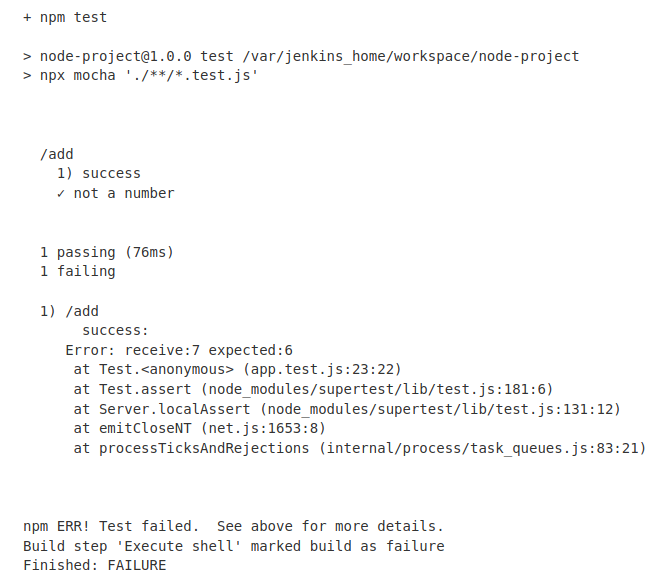Jenkins + github
Install and setup the project
Get the code from this github repository :
- The source code for this project is used to run a ready-to-use docker container.
- The setup.sh script is really simple.
# download the code
$ git clone \
--depth 1 \
https://github.com/jeromedecoster/note-jenkins-github.git \
/tmp/note
# cd
$ cd /tmp/note
# docker pull jenkins
$ make setup
After the setup, we can now start the install :
- The install.sh script starts the first steps of the Jenkins installation. The rest will we done manually within the browser.
- The fully automated installation of Jenkins is a painful experience for me : many strange steps for a result that is never completely satisfactory. And this is clearly what software should avoid doing.
# create docker image with jenkins + plugins
$ make install
The docker image store all Jenkins data in a local directory :
- A volume link is created between /var/jenkins_home and a local directory /var/docker/jenkins-github our your computer.
docker run \
--detach \
--user 0 \
--publish 8080:8080 \
--publish 50000:50000 \
--volume /var/docker/jenkins-github:/var/jenkins_home \
--name jenkins-github \
jenkins/jenkins:lts
You can open http://localhost:8080 to paste the password displayed in the terminal :

Now we choose to install the suggested plugins :
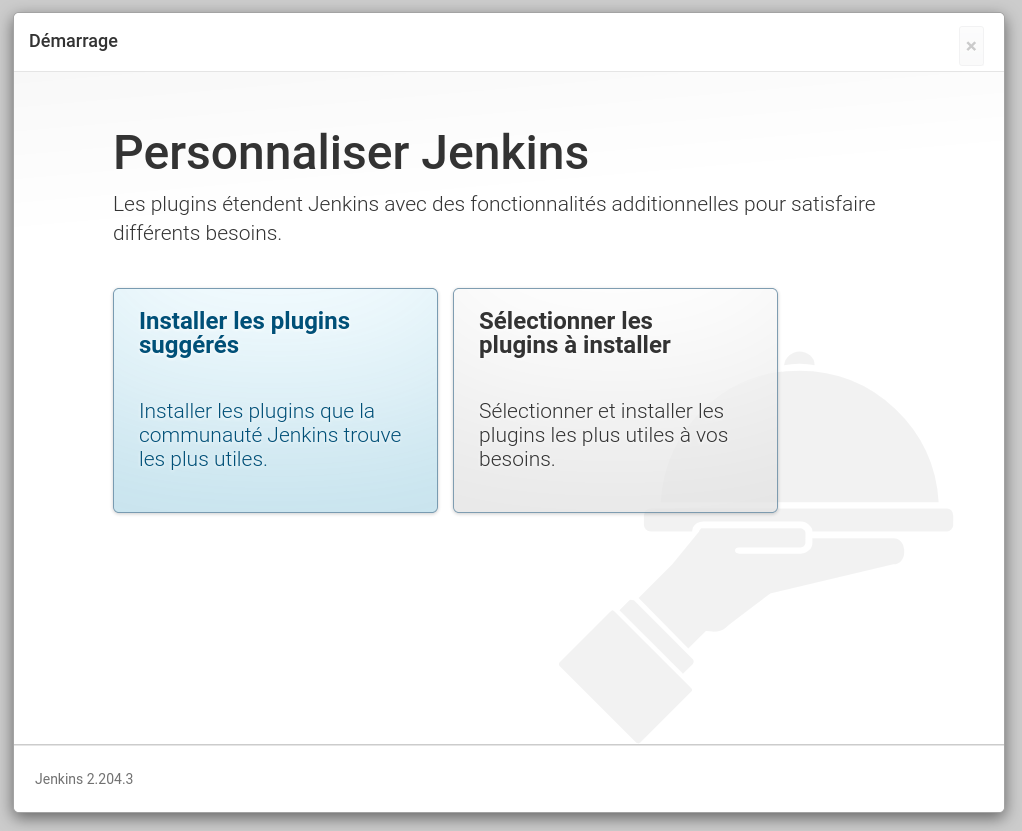
Let’s go have a coffee :
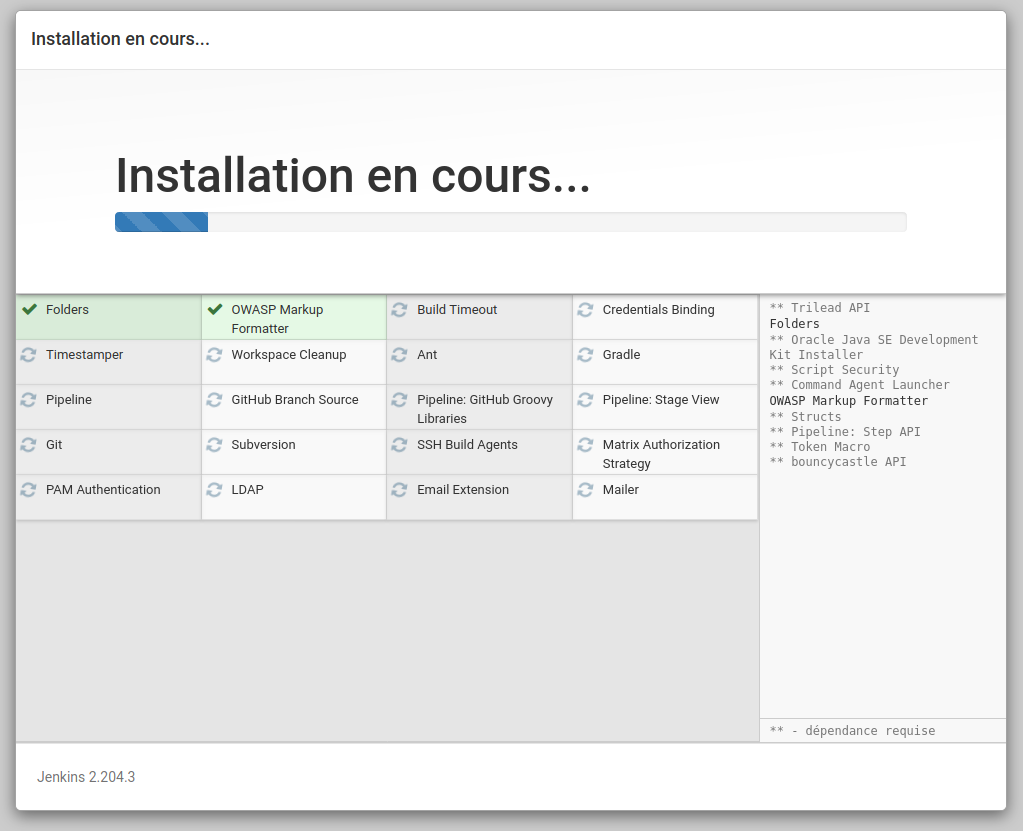
We create the admin user :
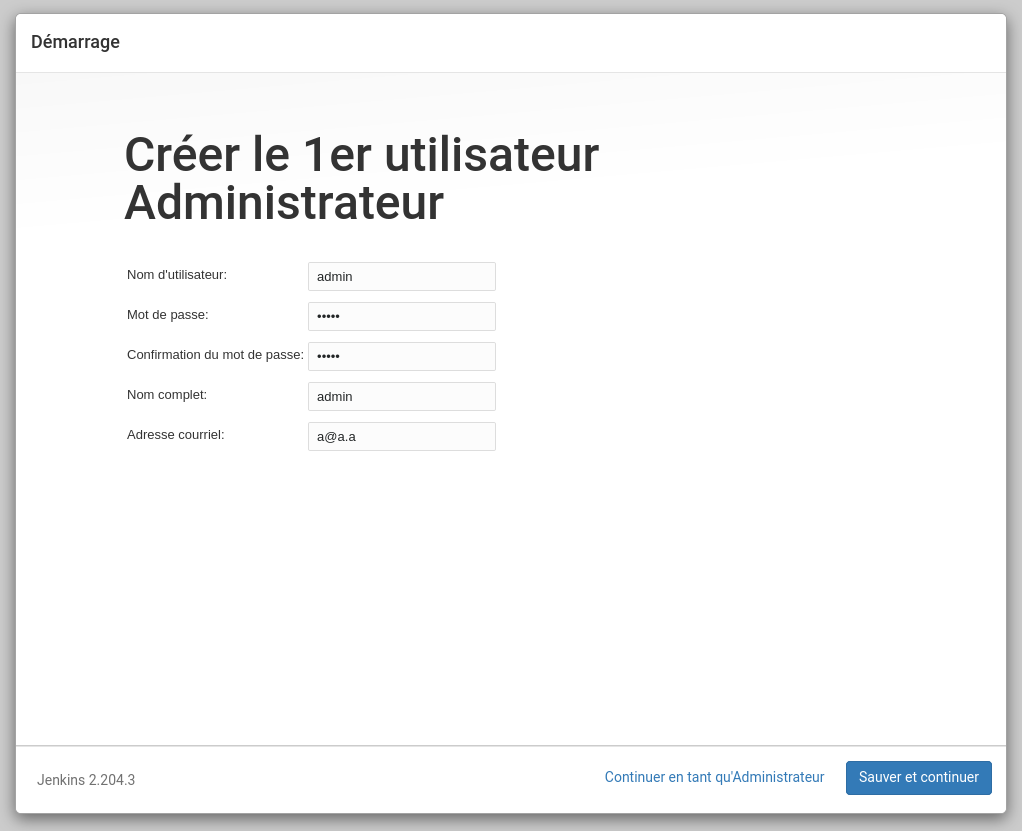
Let’s validate the Jenkins URL :
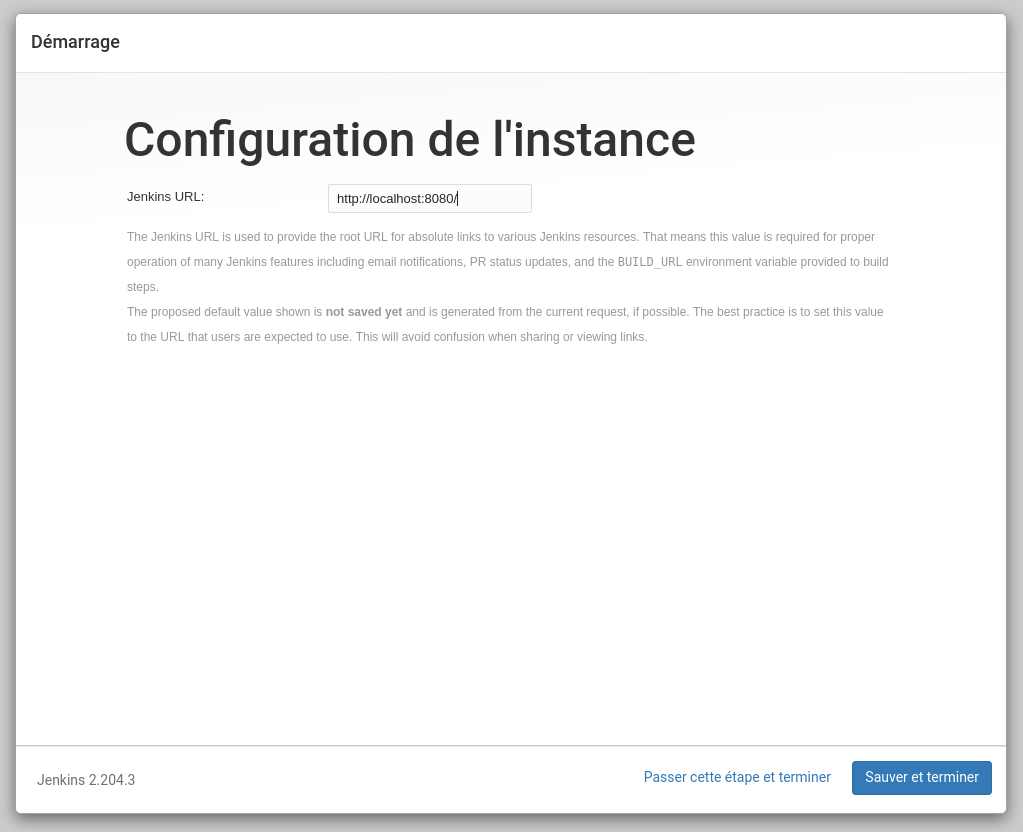
The basic installation is complete. But we must now install 2 additional plugins from the Plugin Manager area :
- Search github integration and choose Install without restart.

- Search nodejs and choose again Install without restart.

Now we need to configure NodeJS in the http://localhost:8080/configureTools/ area :
- We choose the LTS version and name the configuration node-v12.
- We check Install automatically and select a 12.x.x version.
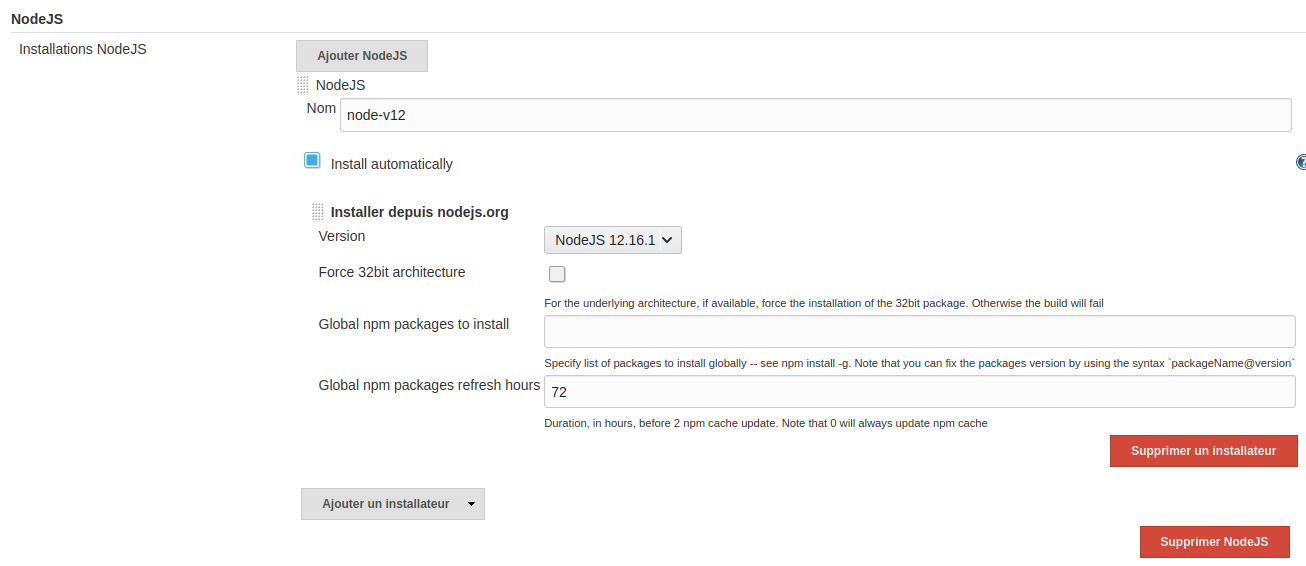
Extra step, we can zip our docker local volume directory to save the current state of Jenkins :
# get the variables
$ source settings.sh
# go to our local volume directory
$ cd /var/docker/
# zip the local volume directory
$ sudo zip -r9 $NAME.zip $NAME
Configure Jenkins
Let’s create a new free-style project :

We will use a simple node project to test Jenkins. You can fork this project and setup the Git repository with your own URL :
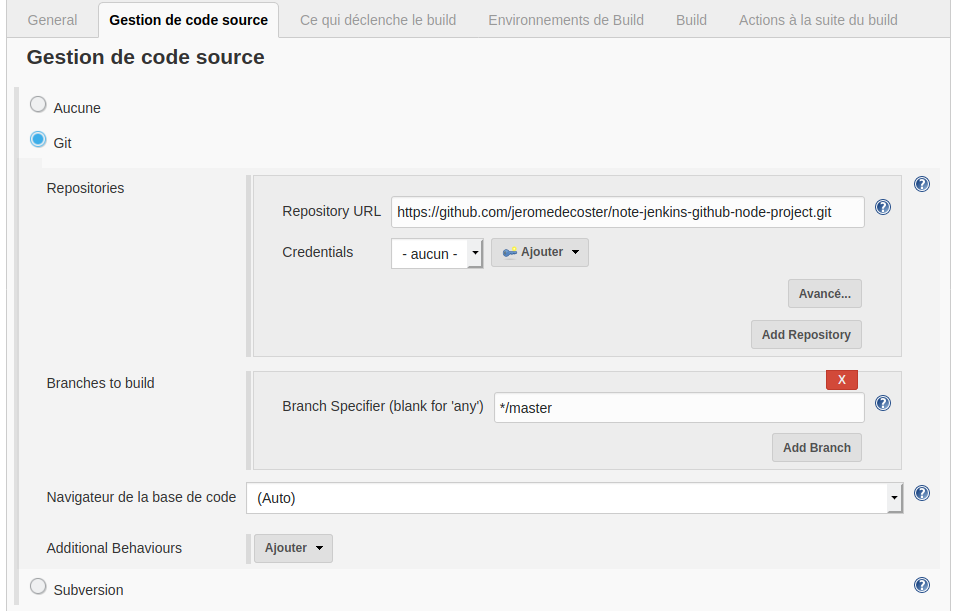
Now we configure the lookup with a cron pattern : * * * * * means check every minute if there has been a new commit.
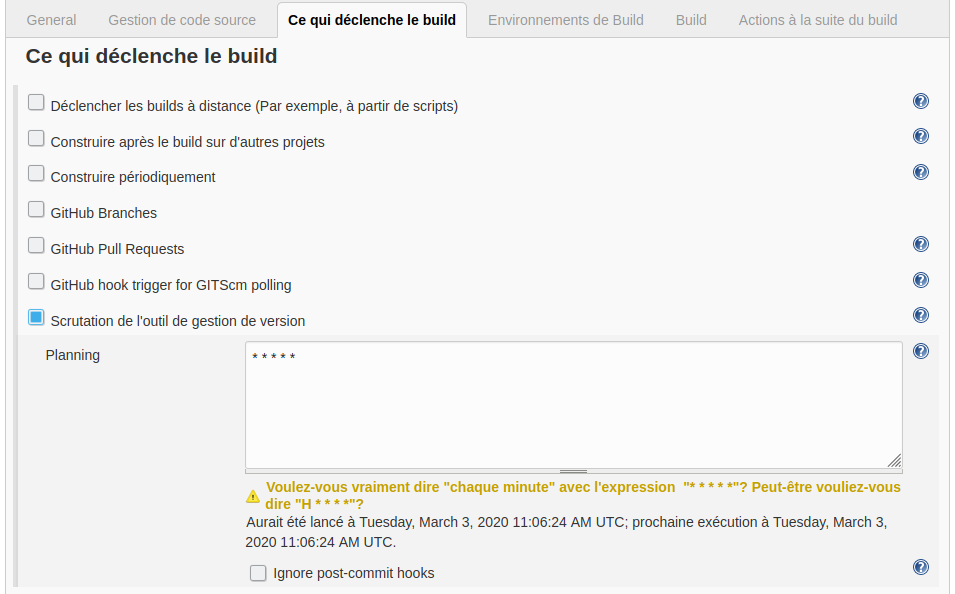
Then we define the NodeJS installation with our node-v12 configuration :
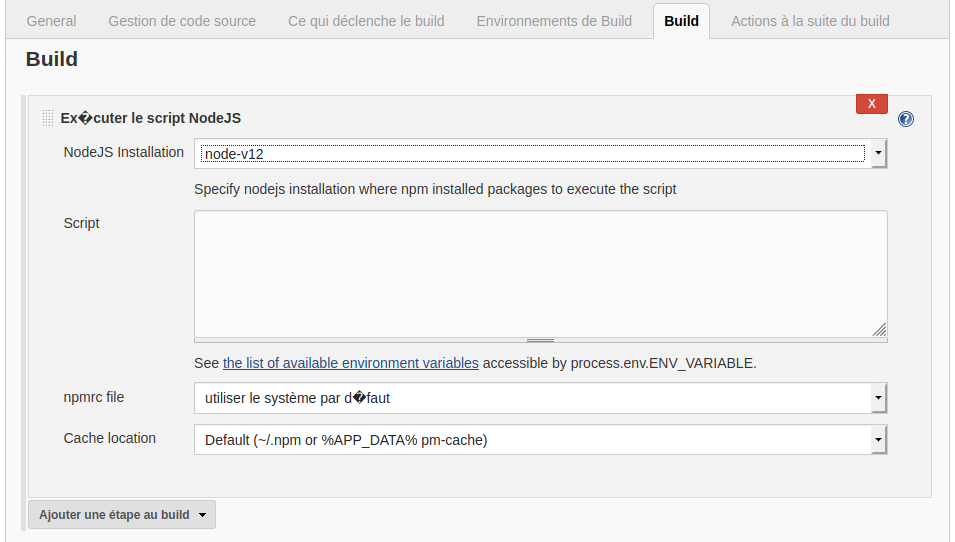
Now we can define a shell script to execute :

Simple things to execute :
npm install
npm test
The npm test is defined in the package.json file :
npx mocha './**/*.test.js'
This will execute this simple app.test.js file :
describe('/add', () => {
it('success', (done) => {
const a = 2
const b = 4
const expected = 6
request(app)
.post('/add')
.send({ a, b })
.set('Accept', 'application/json')
.end((err, res) => {
if (err) return done(err)
const result = res.body.result
if (result === expected) return done()
done(new Error(`receive:${result} expected:${expected}`))
})
})
// ...
The configuration is done. We save it. The we launch a build :
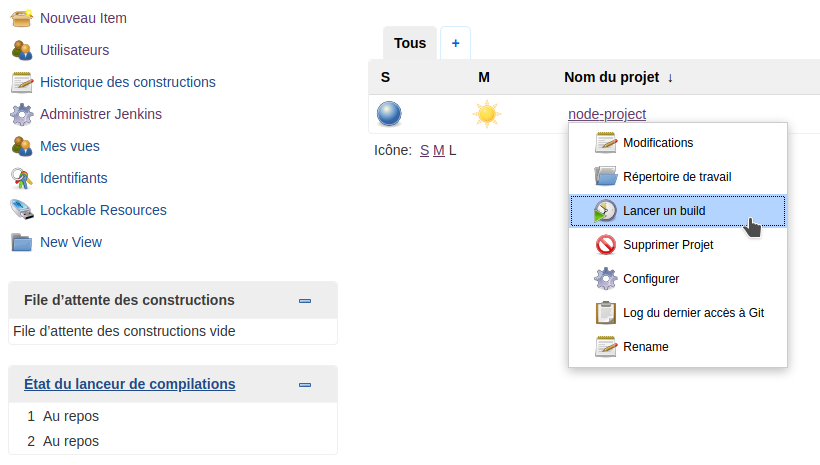
In Console Output we see the processing running :

Then it’s built with SUCCESS :
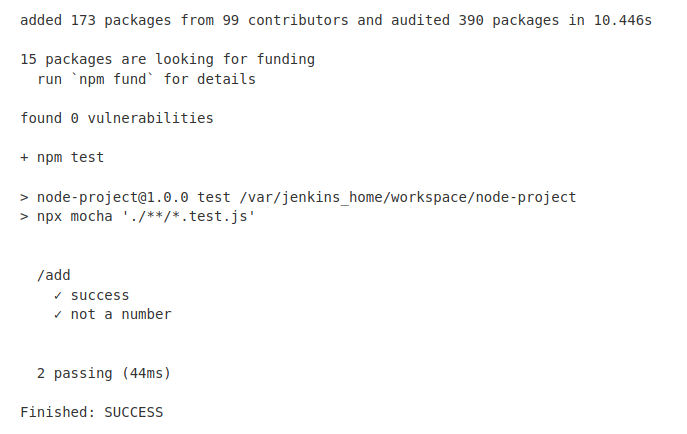
Let’s modifiate the app.js file directly in github :

We add an error :
return res.json({
result: a + b + 1 // modification done here
})
We commit the error :
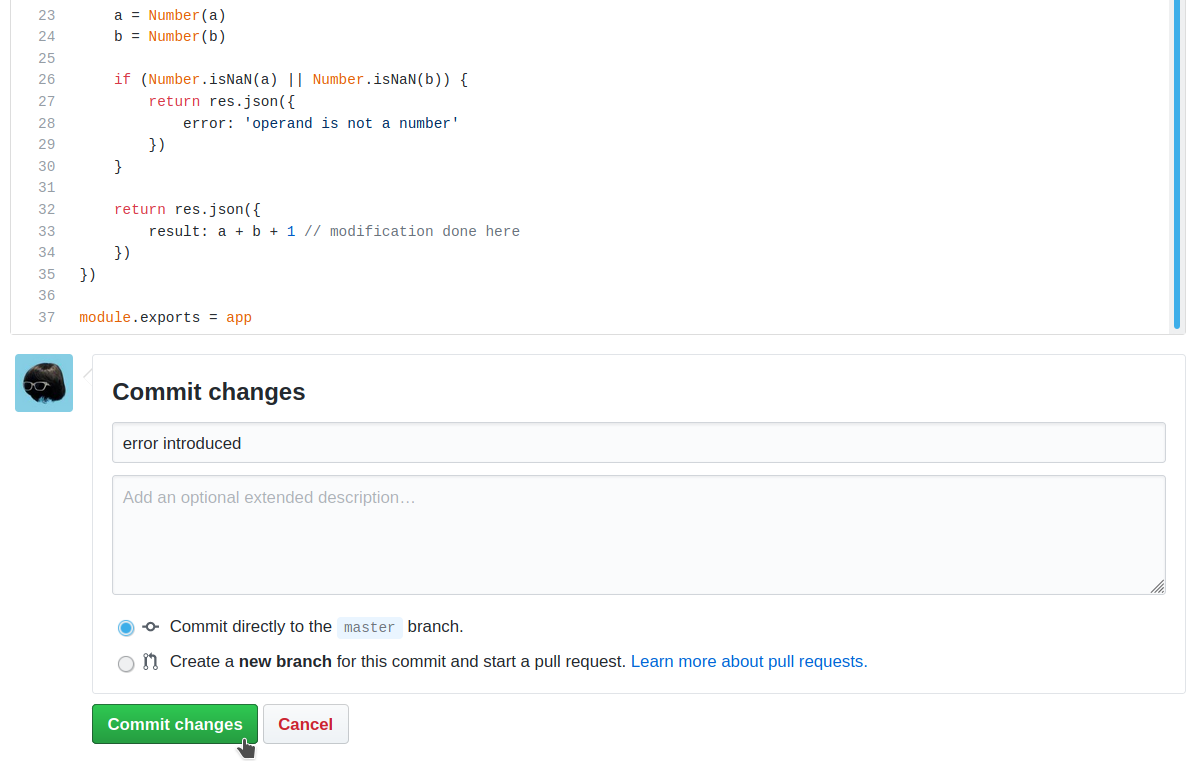
After a few seconds, a build is automatically started :
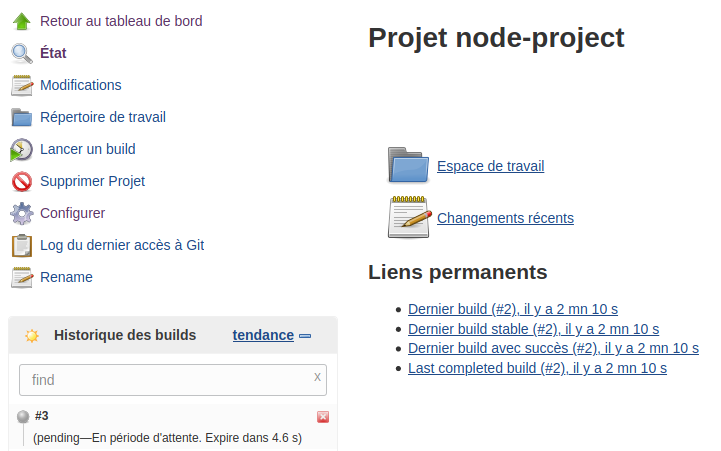
We choose Console Output from the contextual menu :
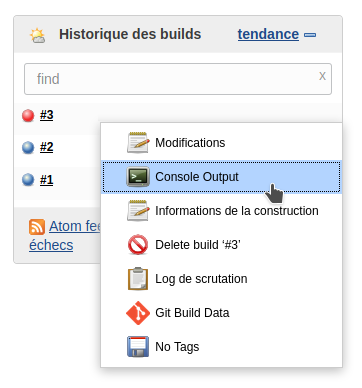
The process ends with our expected FAILURE :
Error: receive: 7 expected: 6
